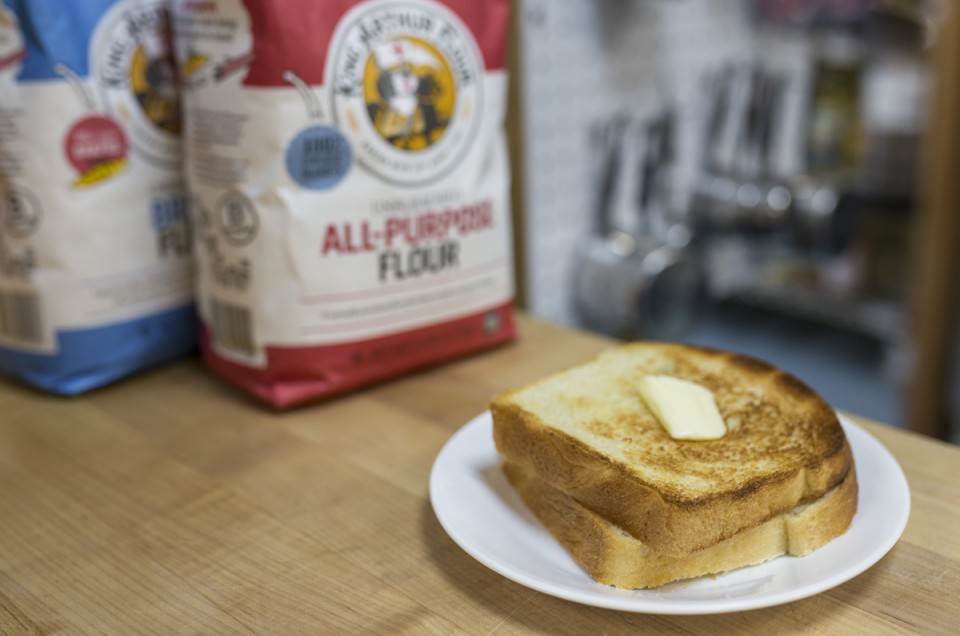


"I want to make a bread recipe that calls for all-purpose flour, and all I have on my shelf right now is bread flour. Is it okay to substitute bread flour for all-purpose flour?"
There are countless reasons you may end up with a distinctive blue bag of King Arthur Unbleached Bread Flour on your pantry shelf. Maybe someone else did the grocery shopping and didn't know there was a difference between bread flour and all-purpose. Or perhaps there’s a big snowstorm coming, and bread flour was all that was left in the supermarket.
Or maybe there was just something enticing about the blue bag that called to you, promising you lofty loaves of homemade bread.
Regardless of how it gets there, once bread flour is in your pantry you might wonder about its potential – what can you actually do with bread flour? How can you substitute bread flour for all-purpose flour?
You can always check the back of the bag, where you'll find the number to our Baker’s Hotline, 855-371-BAKE(2253). We're here whenever you find yourself stumped in the kitchen. Like when you only have bread flour in the house, but the recipe you’ve been dying to make calls for all-purpose flour. Can you reach for the blue bag? Give us a call! We’re happy to help.
And while we love hearing your baking conundrums on the hotline, we also want to give you the tools you need to make informed decisions on your own. That way when there's a sudden need for fresh bread (which happens often in my family), you'll be ready to go – no need to pick up the phone.

It's a question we hear almost every day on the hotline.
One answer is protein content.
Bread flour is milled from hard spring wheat, which has a higher protein content than the hard winter wheat used in all-purpose flour. Protein adds strength to dough and enables loaves of bread to rise high. Our bread flour checks in at 12.7% protein, while our all-purpose flour is at 11.7%.
That's the next logical question eager callers ask.
Before responding with a resounding “Yes,” a few of us hotline bakers thought some testing was in order. So I headed to the test kitchen to see exactly what would happen when I substitute bread flour for all-purpose flour in some of our favorite bread recipes.
There’s no better place to start than our Classic Sandwich Bread. It's the kind of bread that makes your toes curl under (in a good way!) when you butter up a slice.
This buxom loaf calls for all-purpose flour. But say you've got half a bag of bread flour to use up. (Plus, you might want a little more chew to make those BLTs you've been dreaming about.)
I tried the recipe with both all-purpose and bread flour to see what would happen.
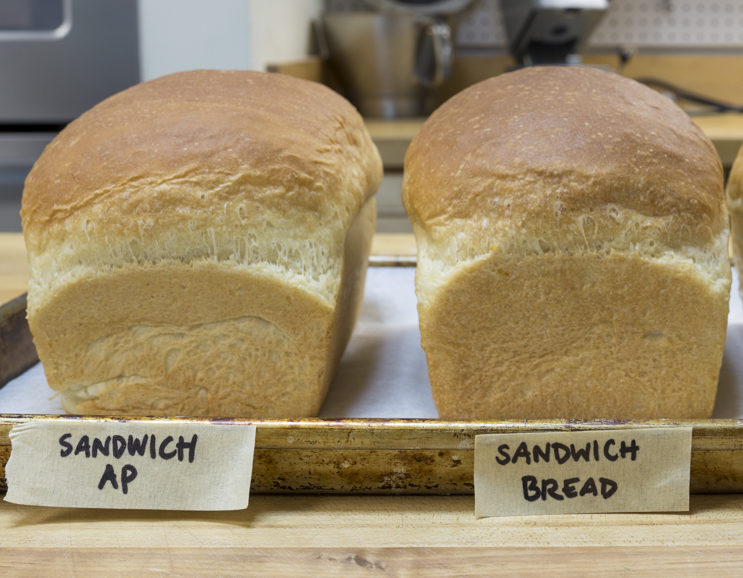
These two beautiful loaves came out of the oven. They rose about the same amount, but you can see the all-purpose version mushroomed a bit over the sides of the pan.
The bread flour loaf, on the other hand, held its shape. This is because dough made with bread flour absorbs slightly more liquid (due to the flour's higher protein level), so it's stiffer; the resulting loaf rises upwards rather than outwards.
Don’t worry, the difference in absorption isn’t enough to cause textural problems or hinder the rise of your loaf. As you can see, both of these loaves are worthy of making a perfect BLT.
Now you might be wondering if there were any surprises inside of these loaves...
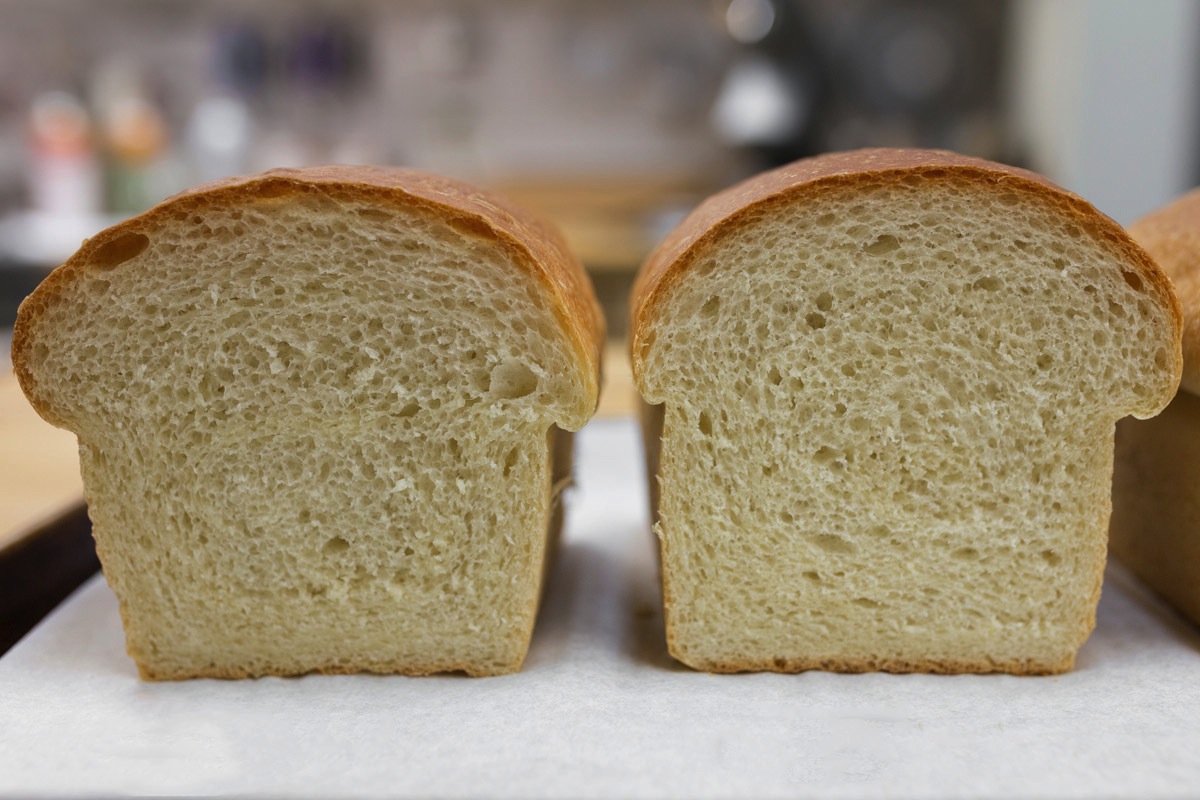
...but nope, no surprises!
If you look closely at the crumb (the small holes that create the structure of the bread), you might see that the bread flour loaf on the right has slightly smaller holes, or what we call a “tighter crumb.” Granted, the difference was quite small.
Both versions were perfect candidates for thick slices of toast slathered with butter and jam. So go ahead and use bread flour in the recipe, same amount as all-purpose. (Remember to fluff and sprinkle your flour or use a scale to measure by weight.)
Oftentimes bread flour or all-purpose flour is substituted for some of the whole wheat flour to help give whole grain loaves a boost. The bran in whole wheat flour impairs the gluten, so using a flour with more gluten can benefit the loaf's structure and rise.
We wanted to see if there was a difference between using bread flour and all-purpose flour to strengthen the rise in a whole wheat loaf. So we decided to test it in our Classic 100% Whole Wheat Bread, using 50/50 whole wheat and all-purpose flour in one loaf, and 50/50 whole wheat and bread flour in the other.
We wondered if the slight difference we saw in the two sandwich loaves would be more pronounced when the flour was given the task of improving the performance of whole grains.
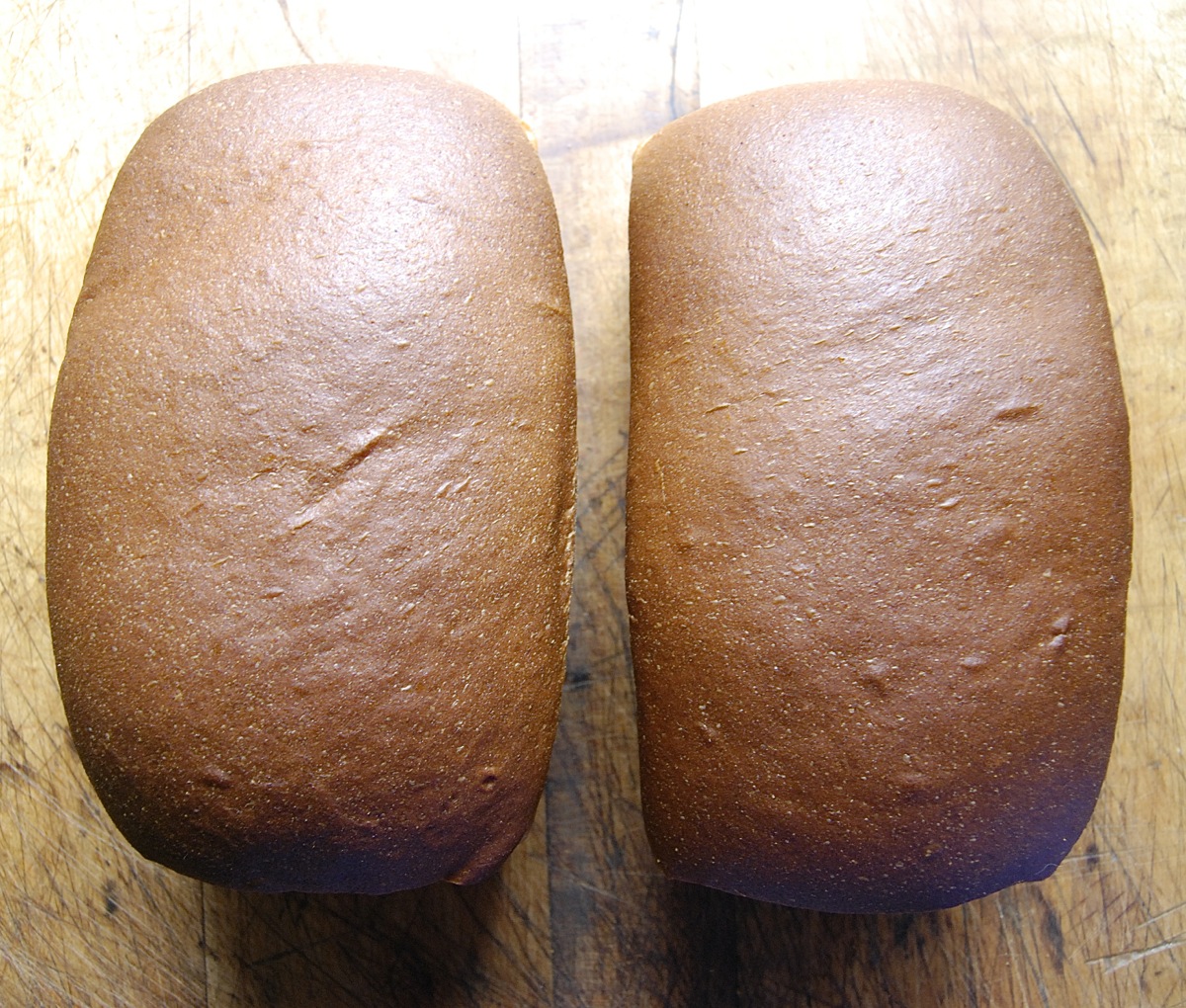
The result? The all-purpose loaf was wider across the top (more "mushroomed") than the bread flour loaf, just like we saw with the Classic Sandwich Bread recipe. But other than the all-purpose loaf being slightly more tender, there was little difference between the two.
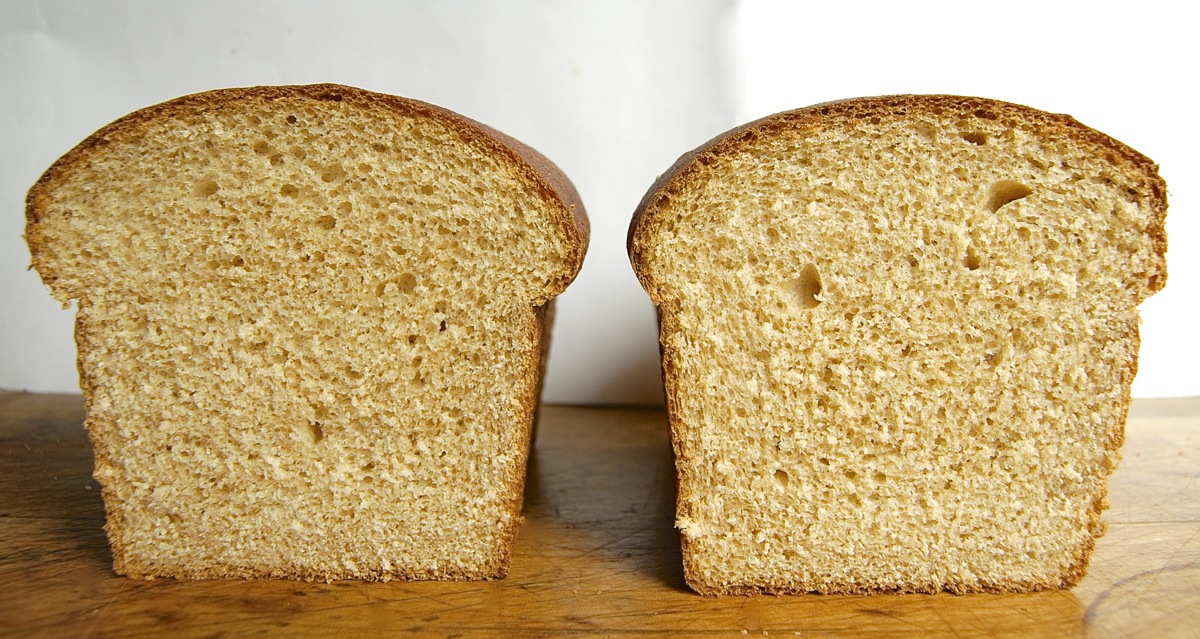
Rise, structure, crust, crumb? Very similar.
We answer with a confident “Yes” when callers ask if they can use bread flour in place of all-purpose (or vice versa) in their bread recipes – in a pinch.
For the very best loaf, we always advise bakers to use the type of flour called for in the recipe: bread, or all-purpose. After all, if a flour is specified, the recipe was developed to provide optimum results when you use the designated flour. These recipes carefully match the flour’s protein level to the amount of liquid called for, creating the ideal hydration – and a perfectly risen loaf.
But in a pinch, it's totally OK to substitute. The consistency of the dough and the structure of the bread may vary, but you’ll still be rewarded with a wonderful homemade loaf regardless of whether you use bread flour or all-purpose flour.
So go forth, and bake! That old recipe of Grandma’s you’ve been too nervous to try because it calls for simply “flour” is waiting for you – give it a shot! Use bread flour if you want a tighter crumb and a loaf that holds its shape, or choose all-purpose if you’re looking for a slightly more open texture and a bit more tenderness.
I like to remind the people I chat with on the hotline that yeast dough is a living, breathing thing, and it’s your job as the baker to give it what it needs. You don't want a stiff dough, nor a slack dough, but something that feels perfectly right.
Add a little water if the dough seems dry, or a sprinkle of flour if it feels too wet. Visualize the adhesive strip on a sticky note – that slightly tacky feeling is what you’re shooting for.
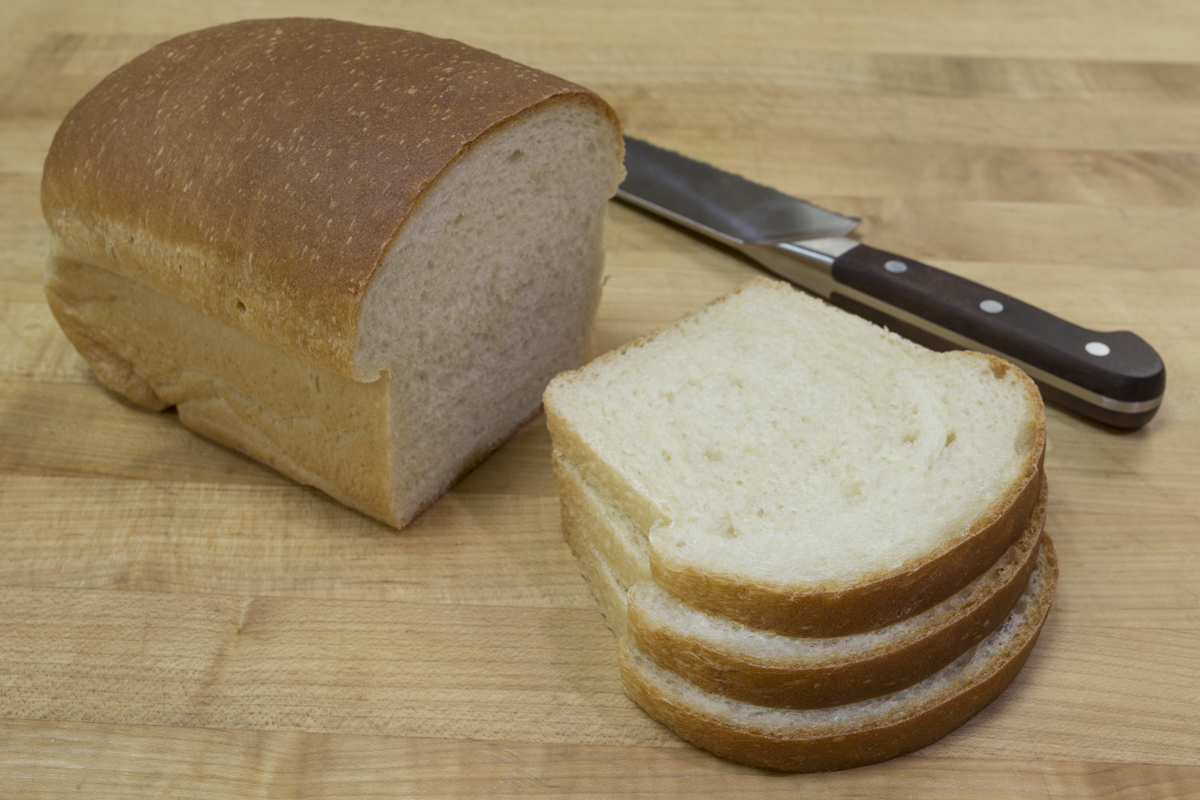
Once you've got that blue bag of bread flour in your pantry, the possibilities are endless. Substitute it into a favorite recipe to see how it lifts your loaf, or use it in a recipe calling for bread flour to really see what it can do.
Japanese Milk Bread Rolls, Back-of-the-Bag Oatmeal Bread, Soft Cinnamon Rolls, and Multigrain Cinnamon-Raisin Bread are just a few of the tempting recipes that await. I promise they'll make you thankful you picked up a bag of bread flour.
Note: The information in this post pertains to King Arthur Flours only. Other national brands tend to mill lower-protein wheat, and produce lower-protein flour. So substituting, say, our King Arthur Bread Flour for another company's all-purpose flour may mean a protein swing of 2 to 3 points – which could create a significant difference in your bread's rise and texture.
If you love using bread flour and have favorite ways to use it, we hope you’ll share your experiences in the comments, below.